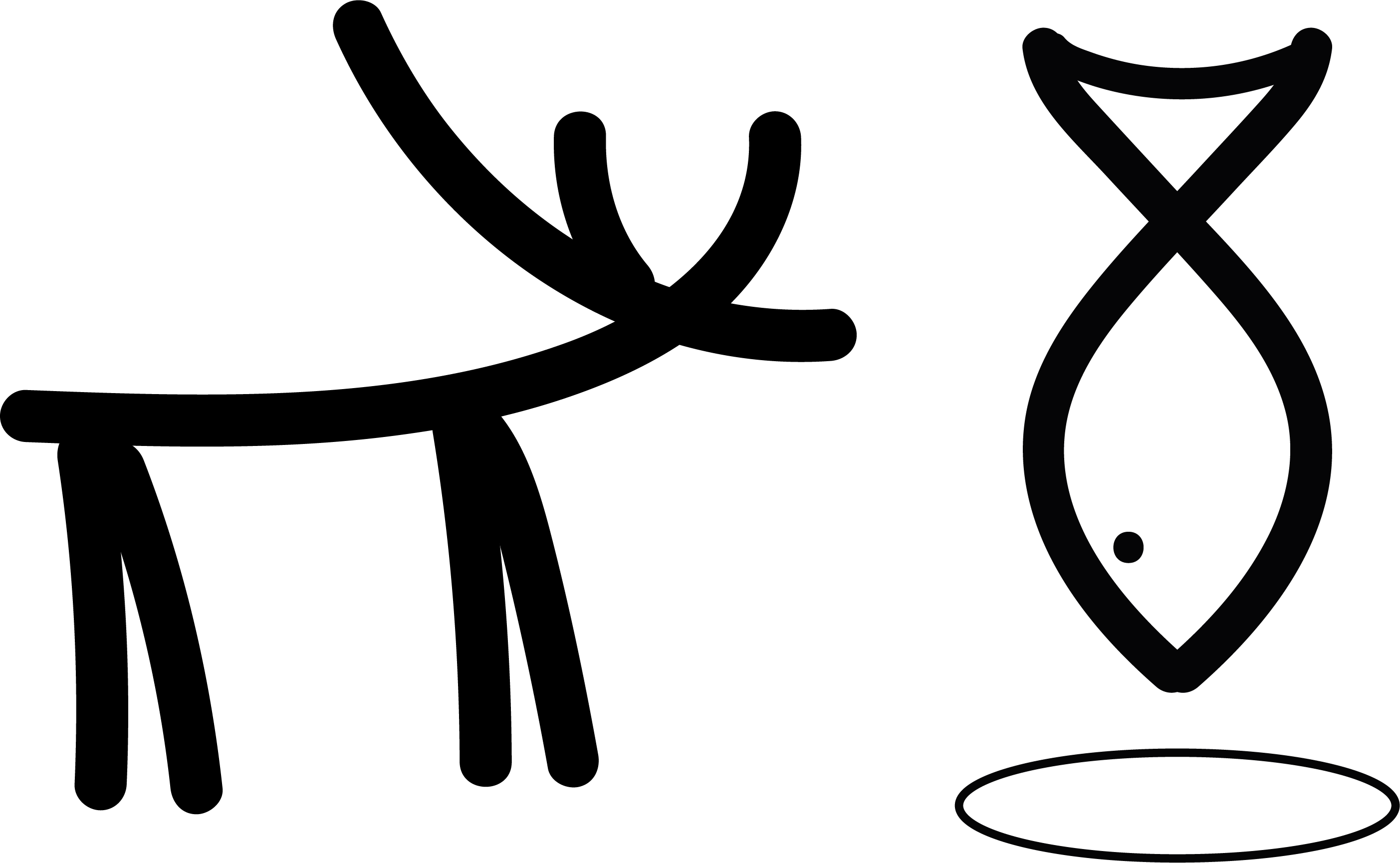Reindeer
The humble reindeer, capable of withstanding temperatures of -40°C for days on end—on a diet of nothing more than lichen if living in the wild! Humans have only been able to exist this far north as a result of their deep partnership with the reindeer: throughout the ages, reindeer have been herded and hunted for food and also for their pelts—which were used for clothing and as a covering to Sami teepees.
Today, the reindeer are still harvested for similar uses but humans have found other ways to keep warm and survive—so the relationship has shifted somewhat—and they now also play an important role in the winter tourism sector acting as chief sleigh pullers to take you on rides through the still and silent forest. Dasher, Dancer, Prancer, Vixen, Comet, Cupid, Donner and Blitzen: they’re the best known sleigh pullers but not necessarily the best. In fact, we have some rather wonderful ones ourselves, ones we’ve spent hours training to make sure they give you a nice smooth ride through the snow! And, unlike Santa’s reindeers, our reindeer depart individually, each with a sleigh and some guests.
This training process takes a varied amount of time depending on the reindeer in question. Each one requires its own particular study-plan, much like any human has its own style of learning! Only males are used to pull sleighs. This is because the females are busy being pregnant and therefore need to conserve their energy. Males are therefore expected to do the work while the females give birth. It’s a tough gig this being a reindeer! As a sleigh puller, reindeer can live up to 21 years though they are likely to be rested more and more as they reach an age of 15.
You might be wondering what it is that grows on their head?! Reindeer are very special in several ways, one of them being the fact that both males and females have antlers. Antlers are renewable meaning reindeer grow a new pair every year. Females begin growing their antlers in May and keep them all through the year, only shedding them once they have given birth to their calf in May or June. Male reindeer begin growing antlers from February, which they use to fight over access to females in October. Once they have mated, they drop their antlers onto the forest floor sometime in November, so all the reindeer without antlers in the wintertime are males.
During the growth period (summer), the antlers are covered by velvet (it looks like skin covering the antler); this drops off before October. Most if not all of the pulling reindeer have been castrated and as a result of that they retain the antlers longer. The reasons for castrating them are multiple, the most important one being so they don’t spend all their time and energy preparing to fight other males for access to the females. This activity is known as the rutting season and for stags it can be extremely stressful, dangerous and energy consuming and can result in the animal becoming wasted and run down—something that clearly doesn’t make sense if they are to work as sleigh pullers! Outside of the winter tourism season, they are given free reign of the land and go wherever they want to go—so your ride with the reindeer is really quite a unique opportunity to experience a long lasting partnership between humans and these wonderfully wild reindeer creatures.
If this is the first time you see reindeer, please try to stay calm and don’t make any loud sounds or fast movements—we try not to scare them. You can take photos of the animals you can see from here but please do not come too close and do not open any gates. Thank you and enjoy your ride!
